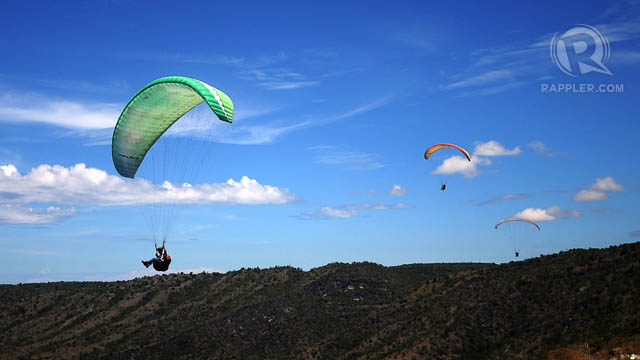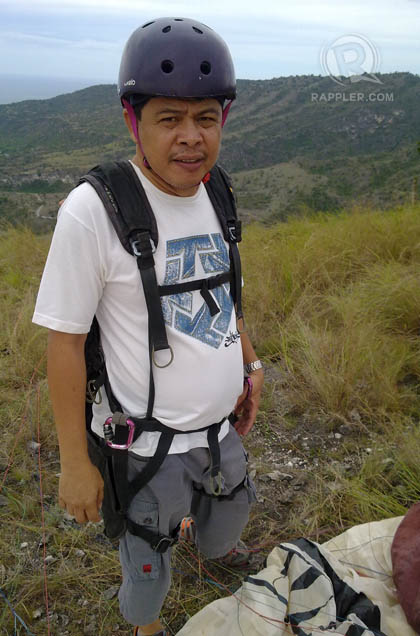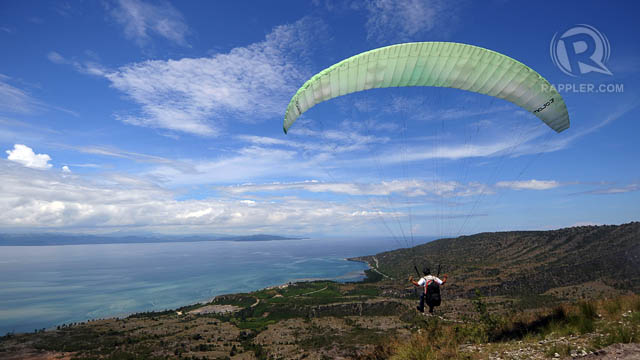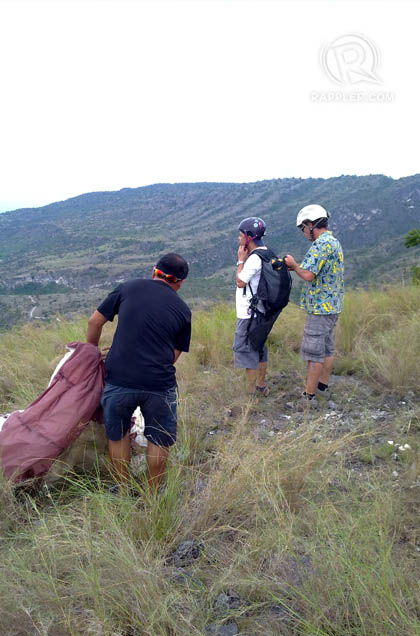SUMMARY
This is AI generated summarization, which may have errors. For context, always refer to the full article.

MANILA, Philippines – It is an acrophobic’s worst nightmare, and a child’s ultimate fantasy fulfilled.
How many of us once dreamed we are the caped super hero who crushed the evil outlaws and saved a damsel falling from the Empire State building?
To defy gravity and be able to hold yourself up in the sky with nothing to separate you from hundreds of feet and the rocky mountains below is every child’s dream — to be able to conquer heights and your fear of flying.
It could be dizzying. Enthralling.
But in reality, it could also turn your stomach inside out and even induce death.
Those who have inordinate fear of heights (acrophobia) will find those with fear of flying (pteromerhanophobia) luckier. The thin line between heavenly ecstasy and morbid, agonizing death stares at you in the face with one serious miscue or miscalculation.
But some make a living out of and actually have fun on this possibility.
Frenchman Armand Dard has been taking off cliffs and mountain edges as a certified paragliding pilot and instructor for the last 17 years.
He was invited by brothers Coco and Ian Tan to take a look at the otherwise barren cattle ranch of the Tan family-owned San Andres Fishing Industries (SAFI) Inc. in Seguel, Maasim in Sarangani.
Dard gave it a shot and immediately fell in love with the place, said to be the only one of its kind in Mindanao. It is also the best location for mountain launch paragliding in the country today.
Fear of heights

Over the last few years, I have developed this fear of standing at the edge of tall buildings.
So when my time to give paragliding a try came, I had to decide to conquer that fear. I had to, to know how it feels when you lift and hold yourself aloft in the air, strapped to a harness holding you and you friendly paragliding pilot from falling and getting crushed.
We had to drive all the way up on a 4×4 SUV to negotiate the steep and rocky edges of a cliff. Atop, a small clearing had been hastily made, for a friendly competition among 10 paragaliders that included several Canadian friends of the Tan brothers and a Taiwanese a few days before
The pre-flight instructions were very brief: just the basics.
“We will be riding in tandem,” says Dard. “And you will have to follow my instructions.
“When I say roll over to your left, just lean towards your left and cross you right legs over your left. When I say right, do it the other way. When I say straight forward, just sit and relax on a built-in seat in your harness.
“We have to run against the wind to have a quick and good lift and continue kicking your feet in running motion in case of aborted flight to avoid injuries when ‘crashlanding.’ We will land on the same head wind and take two steps backward upon touching ground before turning to your left towards the chute to avoid being dragged backwards.”
The instructions from the Frenchman are in halting English, understandably. Before I knew it, I was all “harnessed,” strapped from my back to Armand’s front and waiting for the right gale of wind for lift-off.
Taking flight

It was a short dash.
Three or five arms’ length and we were up in the air.
What happened next were the longest 7 minutes of my hidden acrophobic side.
I felt the adrenalin rush. At first, I could not seem to focus on the objects below me — including the vehicles parked at the edge of the landing which still had a visible landing accuracy target. The vehicles looked like Matchbox miniatures!
We made two turns each to our right and left before Dard decided that the wind, at 2:30 in the afternoon, was not good enough for a long flight.
By long flights, paragliders mean it to be 15 minutes or more. The Taiwanese friend of Coco Tan said he was up in the air for two hours earlier in the day for their after-tournament fun fly.
We landed smoothly.
Dard says accidents do happen. They can come from misjudging the headwind and direction, a sudden downward draft or a faulty landing.
Future attraction

Coco Tan said then that a team from the World Association of Paragliders will be coming over to evaluate the site for possible inclusion in world paragliding tour competitions next year. If accredited, it will be the first of its kind in the Philippines.
Dard said the site in Seguel is by far the best throughout the country; the ones in Carmona, Cavite and Montalban, Rizal follow far behind.
What makes Seguel more attractive is the majestic view of Sarangani Bay and the day-long winds that paragliders dream of. The French instructor says the best time to fly here is between 10 AM and 1 PM.
Paragliding gear can cost a fortune for fixed-income earners, but it’s a one-time emptying of the pockets.
Brand-new and complete paragaliding gear can cost as much as Php150,000 (US$3,500). Second hand gear can be had for Php60,000 (US$1,400).
Fees for fun flyers could range from Php1,500 to Php3,000 (US$35-70).

For bookings and instructions on how to get to the Seguel paragliding site, contact Chris Romano at 0942-6204950. – Rappler.com
Click on the links below for more.
- Swimming with whale sharks
- Breathtaking Balesin
- Albay: Capture postcard-worthy photos of Mt. Mayon
- Traveling with your girl
- [PH Travel] Paddling in Lake Pandin
Add a comment
How does this make you feel?
There are no comments yet. Add your comment to start the conversation.